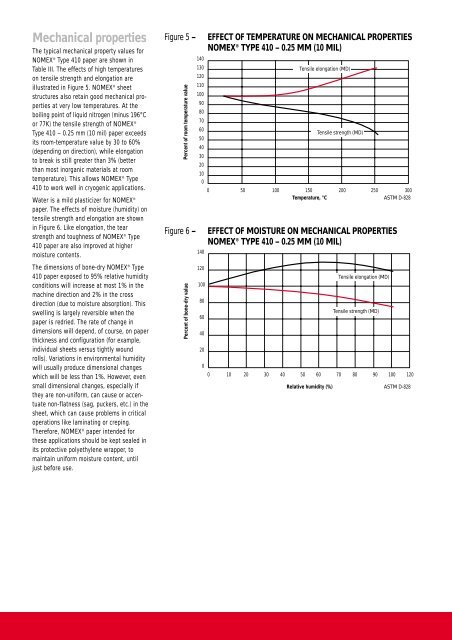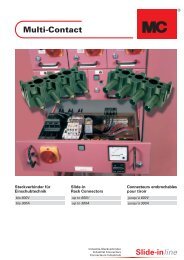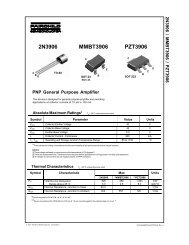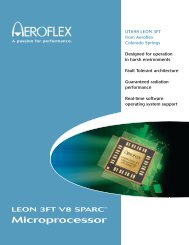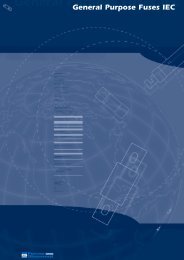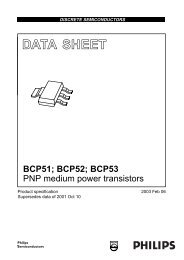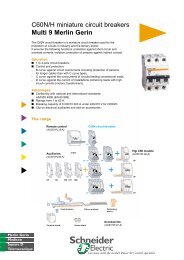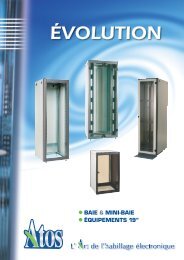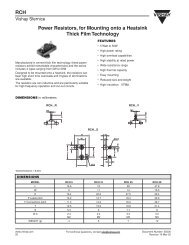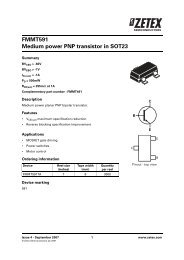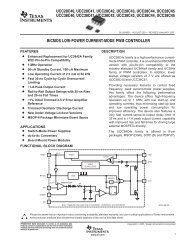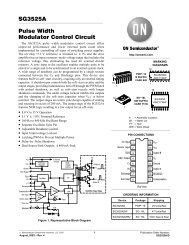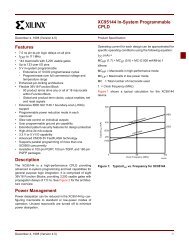TECHNICAL DATA SHEET NOMEX® TYPE 410 - TE-EPC-LPC
TECHNICAL DATA SHEET NOMEX® TYPE 410 - TE-EPC-LPC
TECHNICAL DATA SHEET NOMEX® TYPE 410 - TE-EPC-LPC
You also want an ePaper? Increase the reach of your titles
YUMPU automatically turns print PDFs into web optimized ePapers that Google loves.
Mechanical properties<br />
The typical mechanical property values for<br />
NOMEX ® Type <strong>410</strong> paper are shown in<br />
Table III. The effects of high temperatures<br />
on tensile strength and elongation are<br />
illustrated in Figure 5. NOMEX ® sheet<br />
structures also retain good mechanical properties<br />
at very low temperatures. At the<br />
boiling point of liquid nitrogen (minus 196°C<br />
or 77K) the tensile strength of NOMEX ®<br />
Type <strong>410</strong> – 0.25 mm (10 mil) paper exceeds<br />
its room-temperature value by 30 to 60%<br />
(depending on direction), while elongation<br />
to break is still greater than 3% (better<br />
than most inorganic materials at room<br />
temperature). This allows NOMEX ® Type<br />
<strong>410</strong> to work well in cryogenic applications.<br />
Water is a mild plasticizer for NOMEX ®<br />
paper. The effects of moisture (humidity) on<br />
tensile strength and elongation are shown<br />
in Figure 6. Like elongation, the tear<br />
strength and toughness of NOMEX ® Type<br />
<strong>410</strong> paper are also improved at higher<br />
moisture contents.<br />
The dimensions of bone-dry NOMEX ® Type<br />
<strong>410</strong> paper exposed to 95% relative humidity<br />
conditions will increase at most 1% in the<br />
machine direction and 2% in the cross<br />
direction (due to moisture absorption). This<br />
swelling is largely reversible when the<br />
paper is redried. The rate of change in<br />
dimensions will depend, of course, on paper<br />
thickness and configuration (for example,<br />
individual sheets versus tightly wound<br />
rolls). Variations in environmental humidity<br />
will usually produce dimensional changes<br />
which will be less than 1%. However, even<br />
small dimensional changes, especially if<br />
they are non-uniform, can cause or accentuate<br />
non-flatness (sag, puckers, etc.) in the<br />
sheet, which can cause problems in critical<br />
operations like laminating or creping.<br />
Therefore, NOMEX ® paper intended for<br />
these applications should be kept sealed in<br />
its protective polyethylene wrapper, to<br />
maintain uniform moisture content, until<br />
just before use.<br />
Figure 5 –<br />
Percent of room temperature value<br />
Figure 6 –<br />
Percent of bone-dry value<br />
140<br />
130<br />
120<br />
110<br />
100<br />
90<br />
80<br />
70<br />
60<br />
50<br />
40<br />
30<br />
20<br />
10<br />
EFFECT OF <strong>TE</strong>MPERATURE ON MECHANICAL PROPERTIES<br />
NOMEX ® <strong>TYPE</strong> <strong>410</strong> – 0.25 MM (10 MIL)<br />
0<br />
0 50 100 150 200 250<br />
300<br />
Temperature, °C<br />
ASTM D-828<br />
140<br />
120<br />
100<br />
80<br />
60<br />
40<br />
20<br />
0<br />
Tensile elongation (MD)<br />
EFFECT OF MOISTURE ON MECHANICAL PROPERTIES<br />
NOMEX ® <strong>TYPE</strong> <strong>410</strong> – 0.25 MM (10 MIL)<br />
Tensile elongation (MD)<br />
Tensile strength (MD)<br />
0 10 20 30 40 50 60 70 80 90 100 120<br />
Relative humidity (%)<br />
Tensile strength (MD)<br />
ASTM D-828


